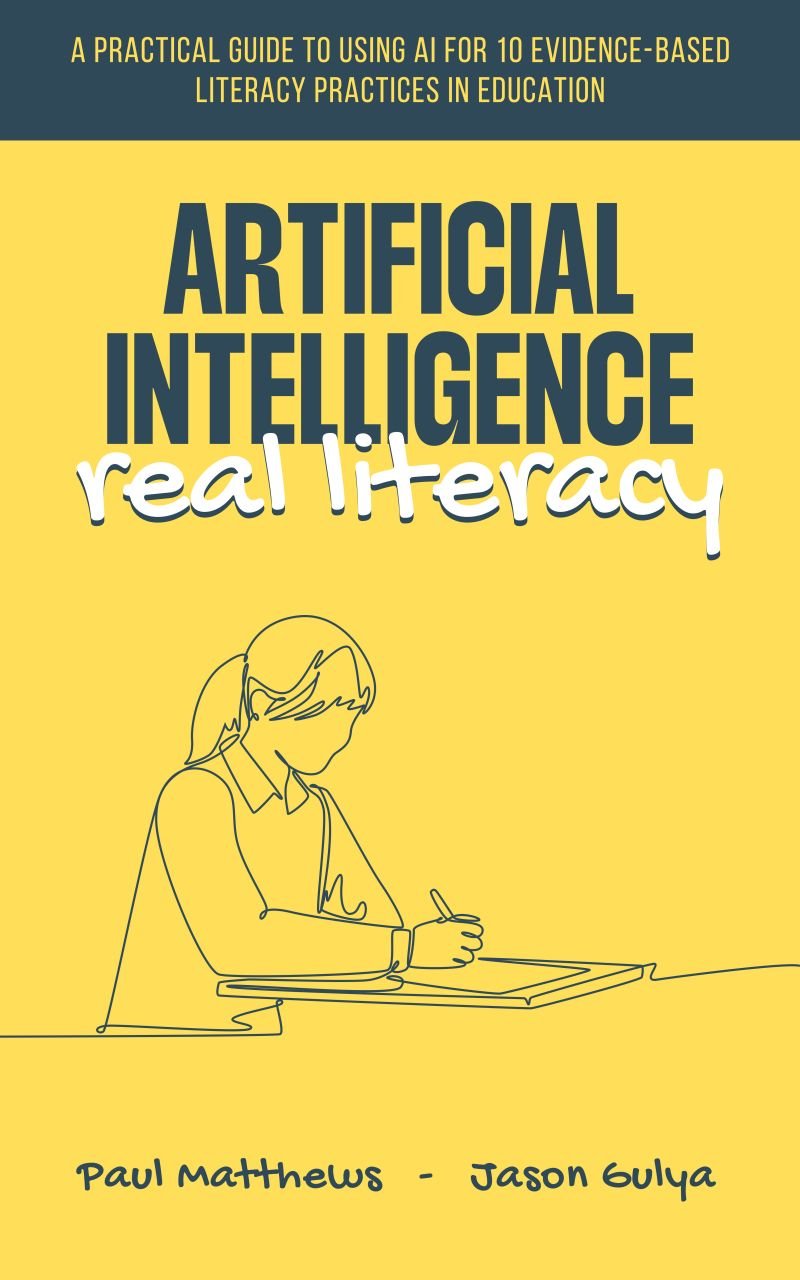Artificial Intelligence, Real Literacy
Paul Matthews and Jason Gulya’s short book has a long title/subtitle: Artificial Intelligence, Real Literacy: a practical guide to using AI for 10 evidence-based literacy practices in education. I have strong objections to using AI in the core of our practice in our classrooms, but that does not mean it might be useful on the fringes, especially as used by English teachers. This book points the way to what might be productive, and never over-reaches, or falls victim to the omnipresent hype by voices primarily outside education.
Their key message is sensible:
Make sure you use AI for options, not answers.
The latter is of course what should most concern us about our pupils’ use (as though there are any answers in English).
They refer to Walter Ong’s point from his lecture ‘Writing is a Technology that Restructures Thought’:
Writing is not a post-cognitive process, in which we articulate a thought we already had. It’s a cognitive process that we use to generate out thoughts.
It is all the more important that we use writing and reading to think critically, and unfortunately misguided use of AI (especially by our pupils, who are novices) can damage this seriously. This book sees its purpose in pointing out how the basics of education can be done better, not that ‘new things’ should be done (they can’t - that’s not how the human brain works). And so,
Purpose precedes practice.
And we, the experts, the professionals, are best-placed to know how to use the technology best, if at all. At the core of English is iteration, as we try and try to improve the quality of both our expression and our thinking:
Educators are better placed tthan any other profession to iterate well.
The emphasis on ‘evidence-based practices’ is welcome, since so much of AI hypers’ discourse is uninformed airy nonsense. The advice here is more practical and down-to-earth (‘If you want five multiple choice questions, ask for nine and choose five’). The authors give guidance on creating sentence stems, on cloze reading, on domain-specific vocabulary, on creating comprehension questions (including before- and after- reading questions), and a particularly valuable tool for us, making exemplars which our pupils can analyse and assess. As they conclude, correctly,
The emergence of AI has not changed the principles and practices of good teaching.
